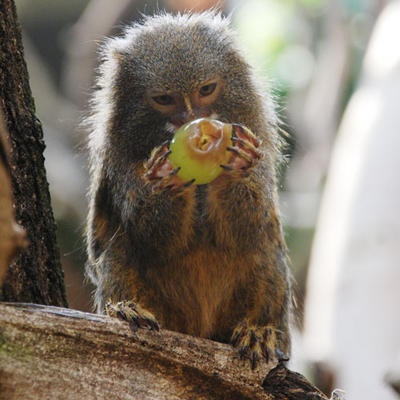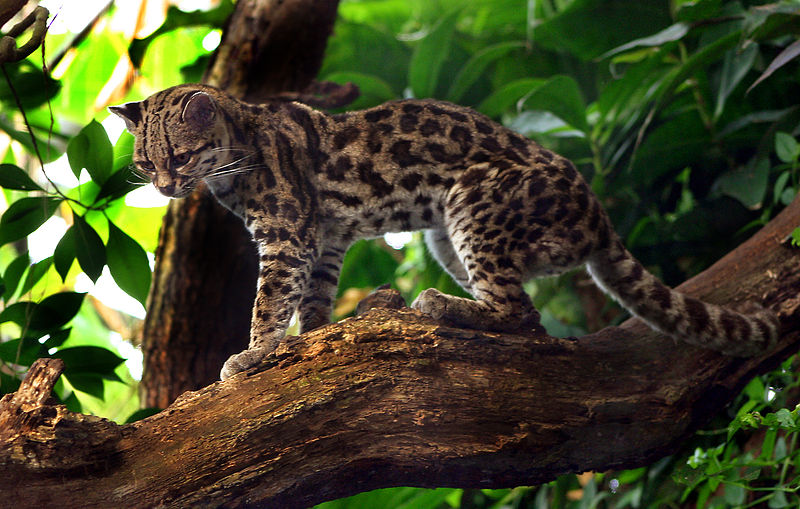Interactions
 Pygmy marmosets interact with many different organisms.
Pygmy marmosets interact with many different organisms. A pygmy marmoset’s diet mainly is comprised of exudates, sap or gum that comes from trees. This organism is “specialized for exudate exploitation” (Jackson, 2011) with long claws and sharp teeth. To make the sap accessible, they gouge holes in the bark of trees, and, when marmosets are finished at a feeding site, ants carry away solidified exudate that was left behind (Primate Info Net, 2005). They also eat small insects and fruits, such as the grapelike fruit from the genus Pourouma (Townsend, 2001). A troop of pygmy marmosets usually has one primary tree that their activities occur around and that is the primary source of exudate. They have formed a mutualistic relationship with the fruits that they eat by pollinating the flower cups (Townsend, 2001). In a mutualistic relationship, both of the organisms benefit in some way.
Due to their small size, pygmy marmosets are preyed upon by ocelots, margays, birds, and snakes (Townsend, 2001). Marmosets have been known to freeze or give alarm calls when a predator is spotted and will also mob and attack an intruding raptor, predatory bird, within range (Snowdon and de la Torre, 2002). A golden eagle is an example of a raptor.
Photo Credit: Paul Hutton
 Photo
Credit of margay:
Malene Thyssen
Photo
Credit of margay:
Malene ThyssenOther Primates:
Other primates that share habitats with pygmy marmosets include tamarins, such as the emperor tamarin, and some monkeys, such as the squirrel monkey and collared titi monkey. Larger tamarins often chase smaller primates away from exudate holes to feed. (Primate Info Net, 2005)
As Pets:
Pygmy marmosets have been captured by people to keep as pets by ringing tree that they inhabit with sticky resin so they become immobilized (Townsend, 2001). Groups with high exposure to humans are more stressed and show this through decreased play and vocalizations and also observing their behaviors was more difficult (Snowdon & de la Torre, 2002). Although it may be argued that increased human activities in rainforests could cause an increase in habitat loss and loss of genetic diversity for the pygmy marmosets, they have seemed to adapt and thus extinction in the near future is unlikely (Monteros, 2011; Townsend, 2001).
Next: Facts
Home